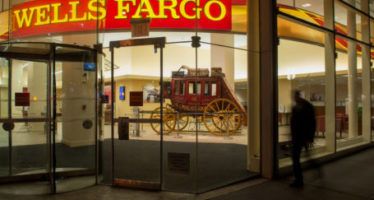Moody's Views of Brown's SOS Speech
FEB. 1, 2011
By WAYNE LUSVARDI
In a press release dated Jan. 27, Moody’s credit-rating agency began adding unfunded public pension debt to total bonded indebtedness for state and municipal governments across the U.S. Moody’s press release wasn’t reported until the day of Gov. Brown’s State of the State speech on Jan. 31.
Moody’s analyst Ted Hampton, is quoted in the press release:
“Pension underfunding has been driven by weaker-than-expected investment results, previous benefit enhancements and, in some states, failure to pay the annual required contribution to the pension fund. Demographic factors — including the retirement of Baby Boom-generation state employees and beneficiaries’ increasing life expectancy — are also adding to liabilities.”
Moody’s now shows California with a combined debt of about $137 billion ($136.9 billion), well under the half trillion that Stanford University estimated last year. But this is a step in the right direction of risk disclosure to bond investors and taxpayers.
The California State Treasurer’s Web site shows total state and local debt issued of about $89 billion ($88.773 billion) as of Dec. 31, 2010.
Moody’s apparently added $48 billion in unfunded debt to the state’s official debt figure. However, it is unclear if the $137 billion in combined debt for California includes only the unfunded debt for pension obligations of state workers or of all state and municipal workers in cities and counties as well.
The report, “Combining Debt and Pension Liabilities of U.S. States Enhances Comparability,” is available at moodys.com for registered users or for $550.
CalPERS, the California Public Employees’ Retirement System, recently increased its pension contribution formula for every level of government given that it is underfunded.
California’s proposed general fund budget is about $86 billion for the upcoming 2011-12 fiscal year. Gov. Jerry Brown has proposed a mix of spending cuts and tax increases totaling $25 billion over the next 18 months, or $16.6 billion for the upcoming fiscal year.
How to understand California’s debt
By analogy, California’s debt picture can be likened to a family household living on $86,000 per year but with debts of $89,000, after running up four straight years of about $20,000 of accrued debts on a low interest credit card (bonds).
In the past, this fictional household has been making its mortgage payments from stock dividends (bubble money), which stopped after the national financial panic of 2008.
The head of the household estimates an added $25,000 debt over the next 18 months (or $16,600 next year) if his plan of belt tightening and added gifts from relatives doesn’t work out. But that would do nothing to retire the accrued existing debt of about $89,000.
Now his bank tells him his credit rating has been downgraded because the bank is considering that the balloon on his mortgage will be coming due of $48,000.
So reducing the $16,600 debt for next year would be one step forward and three steps backwards. Even if the $16,600 debt for next year can be plugged, total household debt will swell to $137,000. If the $16,600 debt cannot be plugged the total family debt would rise to $153,600.
Stock dividends have resumed in 2009 and 2010 due to stimulus policies of the Federal Reserve. But as of February, 2011, the Standard and Poor’s and Nasdaq indices have risen higher than the 200-day moving average in the stock market than at any time in the last 10 years (see chart at link below). Thus, some are forecasting a market correction bigger than in 2007 with an accompanying recession worse than the last one.
The above is a depiction of the debt situation for California as of the Governor’s 2011 State of the State speech.
Learning of the above debt analogy for California, do you think that California can dig itself out of a hole?
California State Treasurer Bill Lockyer has been stating publicly that media rumors of the state becoming insolvent are overblown. But just before Gov. Jerry Brown’s State of the State speech Moody’s released its new credit rating practice. What rating do you think Moody’s gave Brown’s speech for full disclosure of what the state is facing (A, B, C, D, F)?
Related Articles
Scandal-plagued Wells Fargo could face new $1 billion fine
Wells Fargo, the iconic San Francisco-based financial services giant, already faces unprecedented government punishment for major scandals revealed in recent
DeMaio/Reed pension reform initiative may be pushed back to 2018 ballot
Over the weekend, two sources indicated to me that the Chuck Reed/Carl DeMaio pension reform initiative would be pulled, re-written,
Legislative bipartisan criticism aims at Covered CA spending
Responding to a state senator’s call for an investigation into the marketing budget of California’s Obamacare exchange, the agency




